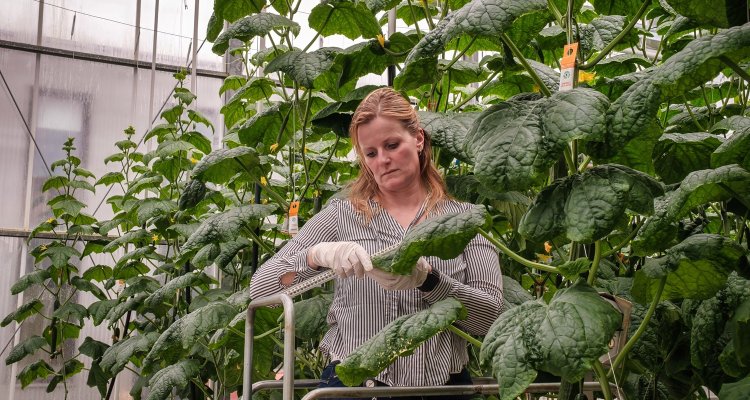
News
‘For autonomous cultivation, you need not only data but also trust’
Autonomous cultivation has been a topic of interest for several years, with researchers and tech companies working hard to advance it. But what do growers think? What do they see as the greatest opportunities for autonomous cultivation? And do they also see risks? Anja Dieleman and students from Inholland University of Applied Sciences investigated these questions as part of the AGROS II project. “Autonomous cultivation is not a replacement for growers’ expertise, but a tool to support them.”
Anja Dieleman is a senior researcher in plant physiology at Wageningen University & Research’s Business Unit Greenhouse Horticulture. She leads AGROS, a project in which WUR collaborates with a consortium of companies to develop an autonomous greenhouse. The first phase of AGROS focused on improving vision technology inside greenhouses. In the second phase—launched last year—the project has deepened its focus, working on dashboards, more flexible algorithms, and enhanced image processing.
These developments are accelerating the progress of autonomous greenhouses. However, Dieleman wondered how this pace aligns with real-world greenhouse operations. Are growers actually waiting for autonomous cultivation? How do they perceive its opportunities and risks? “It’s tempting to only talk to frontrunners, as they tend to be enthusiastic. But what about other growers? How do they feel about autonomous cultivation?”
Anja, how did you assess growers’ perspectives on AI?
“To explore this, we collaborated with Inholland University of Applied Sciences. Three fourth-year students from the Horticulture & Agribusiness programme—Thijs, Bram, and Stef—conducted an online survey and in-depth interviews. It was a fantastic collaboration, bringing together research and education with support from the Greenport Horti Campus Katapult programme, which aims to strengthen education and its connection to real-world practice.”
What do growers see as the opportunities and risks of autonomous cultivation?
“A total of 137 growers participated in the survey, which is a great response. Their outlook on autonomous cultivation ranged from neutral to positive. We also asked them about the biggest opportunities and risks.
Growers see key benefits in having greater control over cultivation and climate, as well as improved crop growth and productivity. However, they identified dependence on technology and high investment costs as the biggest risks.
We also asked about their willingness to invest in autonomous cultivation systems. While they are interested, they are still in a wait-and-see mode. If they were to invest, their primary interest would be in automated climate control and irrigation strategies.
Interviews with vegetable growers revealed that they view autonomous systems as a way to manage larger growing areas and make operations more comparable. Interestingly, some growers see autonomous cultivation as a threat to their craftsmanship—they fear that their passion for growing will be replaced by algorithms.”
Thijs, Bram, and Stef, what did you learn from the study?
“When a grower decides to collaborate with a company offering autonomous systems, it is not a decision made lightly. It requires a well-defined, long-term vision. What stood out is that growers do not see job losses or cybersecurity as major risks. One possible explanation? Growing crops is more than just watering and climate control—it requires more than just data.”
How was it to be involved in this research?
“It was a great project to work on! Autonomous cultivation is a highly relevant topic, and this was a great way for us to engage with cultivation companies that are exploring some form of automation. Whether it’s autonomous irrigation or climate control, we encountered a wide range of applications.”
Anja, what’s next?
“I’m very pleased with the results of this research. We will continue developing the building blocks for autonomous systems, such as dashboards, models, and camera technology. But that’s the technical side. The application of autonomous cultivation also has a social aspect. In AGROS II, we will need to focus more on communication and trust. That means first making the shift toward data-driven cultivation to support growers in their decision-making. Only then can we take the next steps toward full autonomy.”